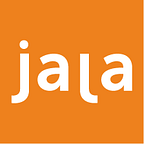Trying out Jala’s translation platform
This past summer, I was introduced to Jala, a community-powered translation platform that offers computer-assisted translation (CAT). Their aim: to make translation more accessible to those who need it most. As someone who has always loved learning languages, Jala caught my interest and I was keen to test it out.
Interface
Jala has a clean, neat design. The main page is the Discover page, where you can see a range of projects that need translating that people have posted.
There are 3 featured projects while the rest of the projects are listed below. The project card lists all the necessary information — source and target language, tags, and deadline. When a particular project catches your interest, you can click on it and a little pop-up shows you the preview of the document as well as the number of words and points for that project. Essentially, each translation project earns you points that you can use to redeem rewards (which I’ve been told is still in the pipeline).
In Dashboard, I find my projects sorted into tabs— ‘Self-translations’, ‘Translate for Others’ and ‘Get It Translated’. ‘Self-translations’ for personal projects; ‘Translate for Others’ for projects I’ve been selected to work on; and ‘Get It Translated’ which are for projects that I can post to the community for help. (Although the titles seem straight-forward, they could be confusing for organisations or new users who aren’t sure about how the category is relevant to them.)
Translation Console
Jala has an integrated translation process that uses machine translation to give a ‘first-cut’ draft translation, and provides contextual terms and sentence suggestions for the translator to do the final edits.
To try it out, I upload an English article from the Straits times and select Simplified Chinese as my target language.
The article is automatically separated into sentences and the machine translation appears on the right. I’m quite impressed, especially with the alternative Terms function — the orange highlighted text in the original article shows me the varying options available for that word as used in other contexts. Clicking on one of the suggestions replaces the corresponding word on the right.
Jala also has a Translation Memory feature. If there is a similar phrase that has been translated before, the dropdown shows you existing translations by other users on the platform. I can choose to use that translation, stick with the machine translation or edit it to fit the context.
How does the platform ensure the quality of translations?
As with many peer-to-peer platforms or marketplaces, the quality of translations is maintained by ratings and reviews of completed projects.
Each Jala user has something like a mini portfolio — some general information about them, their rating and a history or showcase of past work. You can view the translated work in detail by clicking on any project on their profile. For novices like me, good reviews are important in increasing the chances of being selected.
Community Feature
In the past, if I needed a quick translation, my go-to was Google Translate. It’s definitely very convenient, but as someone who is still learning the language, there were many times when the grammar was confusing. Why was this sentence translated this way? Is it really accurate? Sometimes, it left me with more questions than answers.
This is where Jala’s community page comes in handy. Functioning somewhat like a forum, both translators and translation seekers can post, tag and reply to questions related to translation. If there’s a technical term or a particular phrase that you aren’t sure of, you’ll want to tap on the network of translators and native speakers for help. As someone who’s just starting out in translation, it’s great to be able to get advice from more experienced people in the industry. Moreover, clarifying my doubts has also improved my own grasp of the language! It’s helping others and learning, all on the same platform.
Back when I was learning Japanese, I downloaded this application that allowed people from different countries to share snippets of their daily lives. The setting was informal and casual — my feed was littered with pictures of Sakura (it was Sakura season then), ramen and random roads or buildings. Instead of gimmicky pictures or stereotypical tourist locations, these casual posts gave me true insight into what the daily life of an average Japanese is like. I loved it because when you learn a language, you have to learn the culture too.
I see myself having a similar experience on Jala. Beyond technical translation, I can connect with native speakers and get insights into both language and culture.
Verdict
Jala’s translation platform is an easy-entry into the world of translation and CAT tools. What I liked the most, was the versatility of the website and the ability to help others, work on my own freelance translation projects, or get a second opinion — all in the same place.
As a student who has limited financial means and time, translating for others, in particular NGOs, is a small way to help others from the comfort of my home while at the same time honing my translation skills and building experience.
I’d definitely recommend Jala to those who are interested in translation or just want to put their language skills to good.
This article was written by Yi Jia Loh. Yi Jia is an avid language learner and Global Studies student at the National University of Singapore. She has spent time learning Mandarin, Japanese and German.
